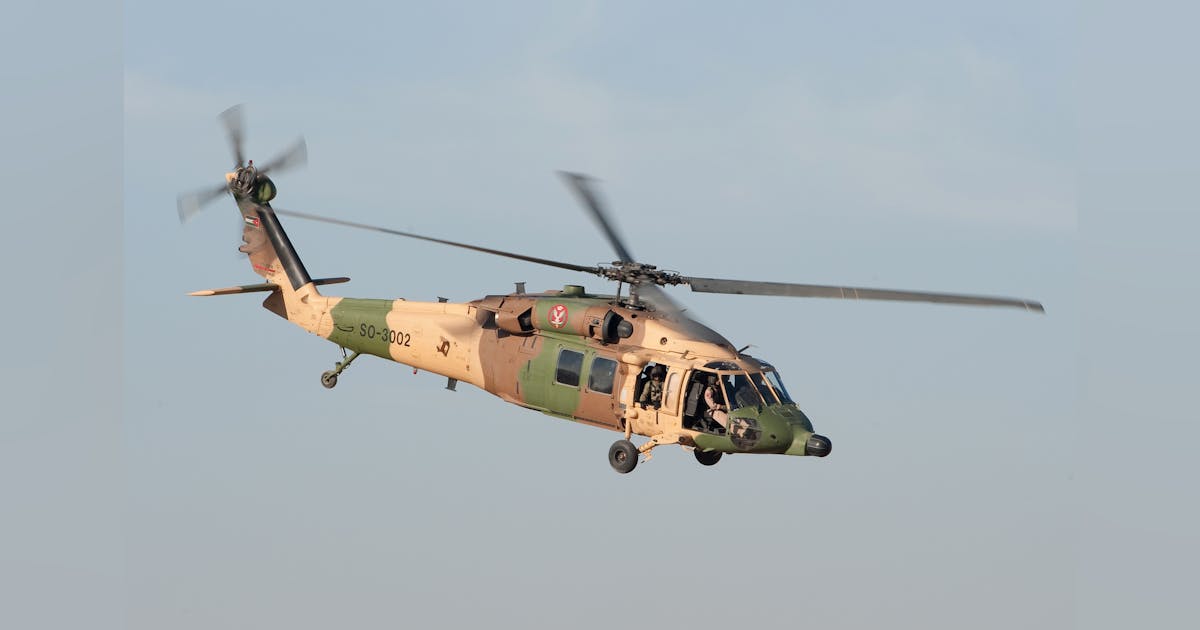Taking Flight: Uh-60 Black Hawk Pilot Qualification Process Described
Taking Flight: Uh-60 Black Hawk Pilot Qualification Process Described
Blog Article
The UH-60 Helicopter: Browsing Through Its Background, Layout, and Significant Role in Aviation
The UH-60 helicopter, typically described as the Black Hawk, stands as a testimony to the developments in air travel innovation and its obvious influence on both noncombatant and army operations. From its modest beginnings to its present condition as a sign of dependability and flexibility, the development of the UH-60 has been marked by continuous development and adaptation to satisfy the developing requirements of the aeronautics industry. As we look into its background, design ins and outs, and the crucial role it plays in various sectors, a deeper appreciation for this legendary helicopter arises, clarifying the significant payments it has made to the world of air travel.
Evolution of the UH-60 Helicopter

The evolution of the UH-60 helicopter can be mapped back to the demand for a flexible and dependable energy airplane that might satisfy the requiring requirements of contemporary military procedures. Developed by Sikorsky Aircraft, the UH-60 Black Hawk initially flew in 1974, with the united state Army becoming its main driver. For many years, the UH-60 has actually undergone a number of upgrades and variants to boost its capabilities and performance.

Layout Innovations and Functions

Moreover, the UH-60 includes a sophisticated avionics suite that consists of advanced navigating systems, communication tools, and electronic display screens. These technical innovations improve situational understanding for the crew, enhancing overall goal effectiveness and safety. The helicopter's spacious cabin layout helps with quick and simple loading and dumping of troops, tools, and casualties, making it a versatile property for military operations and disaster relief efforts.
Furthermore, the incorporation of composite materials in crucial architectural components minimizes weight while maintaining longevity, raising the UH-60's efficiency and fuel efficiency. The UH-60 helicopter's innovative design components jointly add to its reputation as a reliable and very qualified airplane in both army and noncombatant air travel sectors.
Civilian and army Applications
With versatile capabilities matched for a series of functional needs, the UH-60 helicopter serves both noncombatant and military sectors efficiently (uh-60). In armed forces applications, the UH-60, commonly referred to as the Black Hawk, plays an important role in troop transport, medical evacuation, fight assistance, and search and rescue missions. Its rate, dexterity, and ability to run in numerous environments make it a beneficial property for army procedures worldwide. The UH-60's sophisticated avionics, defensive systems, and adaptability have solidified its position as a cornerstone of army helicopter fleets.
In the private sector, the UH-60 serves a wide range of purposes, including firefighting, police, emergency medical services, and company transportation. Its dependability, ability to move, and spacious cabin make it a prominent selection for energy missions. Additionally, the UH-60's adaptability for VIP transport and overseas procedures additionally highlight its value in civilian applications. Whether in private or armed forces use, the UH-60 helicopter remains to confirm its worth as a flexible and vital aerial platform.
Effect On Air Travel Workflow
Having actually developed its value in military and noncombatant applications, the UH-60 helicopter's effect on air travel procedures expands beyond its versatile capabilities to affect a large variety of airborne goals. In military setups, the UH-60 plays an you can try these out essential duty in army search, rescue and transport operations, clinical discharge, and unique procedures support.
In noncombatant operations, the UH-60 offers numerous vital features, such as firefighting, police assistance, calamity relief efforts, and aerial surveys. uh-60. Its flexibility makes it possible for fast responses to emergency situations and all-natural disasters, helping in saving lives and securing neighborhoods. Additionally, the UH-60's reliability and endurance make it a preferred option for energy objectives, consisting of transport of cargo and personnel to remote areas. In general, the UH-60 helicopter significantly impacts aeronautics operations by supplying unparalleled abilities and assistance across a wide range of goals.
Future Dopes and Potential Customers
The advancement of the UH-60 helicopter is positioned to revolutionize aviation capabilities and reshape operational paradigms in the coming years. Advancements in technology and layout are driving the advancement of next-generation UH-60 variants that assure enhanced rate, objective, and dexterity adaptability. One vital location of focus for future UH-60 designs is improving self-governing capabilities to improve operational effectiveness and safety. By integrating innovative independent trip systems, the UH-60 can minimize pilot work, enable complicated objectives in challenging settings, and boost overall objective effectiveness.
Moreover, there is an expanding focus on sustainability and fuel efficiency in the design of future UH-60 helicopters (uh-60). Suppliers are checking out new products, propulsion systems, and wind resistant improvements to lower environmental influence and operating expense. These innovations not only profit the environment but also add to the long-term practicality and competition of the UH-60 in the quickly developing aeronautics sector
Final Thought

The UH-60 helicopter, often referred to as the Black Hawk, stands as a testament to the innovations in air travel modern technology and its obvious impact on both armed forces and private operations.Having established its significance in military and civilian look what i found applications, the UH-60 helicopter's effect on aeronautics procedures expands past its flexible capacities to influence a large array of aerial objectives. Overall, the UH-60 helicopter great site considerably influences air travel procedures by providing unparalleled capacities and assistance throughout a broad range of objectives.
The advancement of the UH-60 helicopter is poised to reinvent aeronautics capabilities and improve operational standards in the coming years. As innovation proceeds to advance, the future growths and leads for the UH-60 helicopter continue to be promising, guaranteeing its continued relevance in the area of air travel.
Report this page